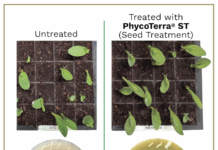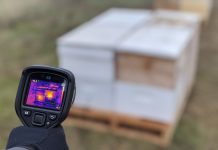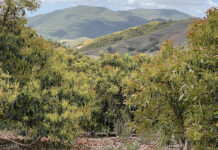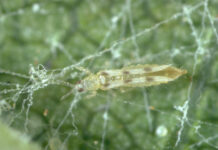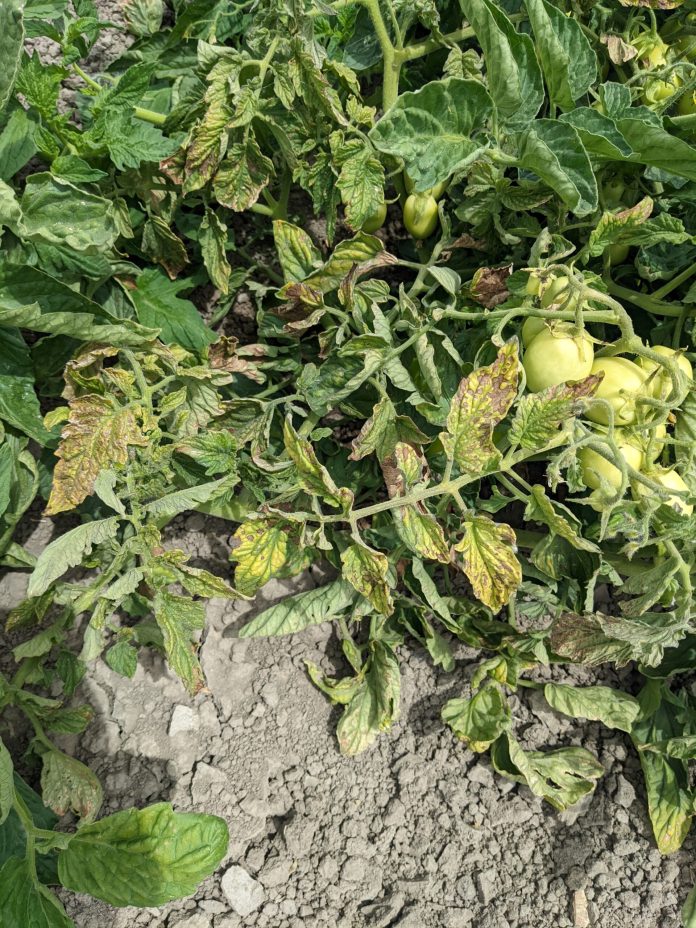

A resistance-breaking strain of tomato spotted wilt virus (TSWV) was detected in May in a northern Sutter County processing tomato field, according to the UCCE Vegetable Crops Newsletter.
UCCE Vegetable Crops Advisor Amber Vinchesi-Vahl recommends monitoring fields for TSWV, particularly those planted with resistant cultivars. Fields where more than 3% of plants are showing symptoms are suggestive of the presence of the resistance-breaking strain. Symptoms include extensive distortion, yellowing and necrosis of leaves. Plant infections should be confirmed with molecular testing. Locations should be documented to allow follow-up next year.
Growers who suspect TSWV in resistant tomato varieties should contact Vinchesi-Vahl or deliver samples to the Colusa or Yuba-Sutter UCCE offices.

Incidence of tomato spotted wilt virus has been increasing in California processing tomatoes, Vinchesi-Vahl reports. It is spread from plant to plant by thrips, mainly western flower thrips. Tomato spotted wilt virus can only be acquired by immature thrips. Infected adults can transmit TSWV throughout their 30- to 45-day lifespan.
Symptoms for TSWV depend on stage of growth. In early vegetative stages, bronzing and wilting occur, and the entire plant may look off-color and have a crumpled appearance. At later stages, purpling and leaf curling are evident. Bumpy fruit with ring spots is seen in bearing plants. Symptoms can be similar to those caused by curly top and alfalfa mosaic, but if necrotic spots and rings develop on leaves, followed by necrosis and dieback of entire leaves and shoots, TSWV is indicated.
Effective management targets thrips and the virus. Growers should use transplants from greenhouses that monitor for thrips and inspect plants for signs of TSWV. Growers should avoid planting near established crops with confirmed TSWV infection. Thrips should be managed early in the season with chemical control as monitoring or degree day predictions indicate. Tomato fields with high populations of thrips and resistance-breaking strains of TSWV should be sprayed for thrips one to two weeks prior to harvest to reduce the spread of the adults to nearby fields. Weed control in and around the field is also recommended.
Best practices after the growing season include removal of old tomato plants and other host crops on a regional level. Weed control in adjacent fallow fields can reduce sources of infection.
For additional information on testing for TSWV or developing thrips management strategies, contact UC Davis’ Robert Gilbertson, rlgilbertson@ucdavis.edu.





